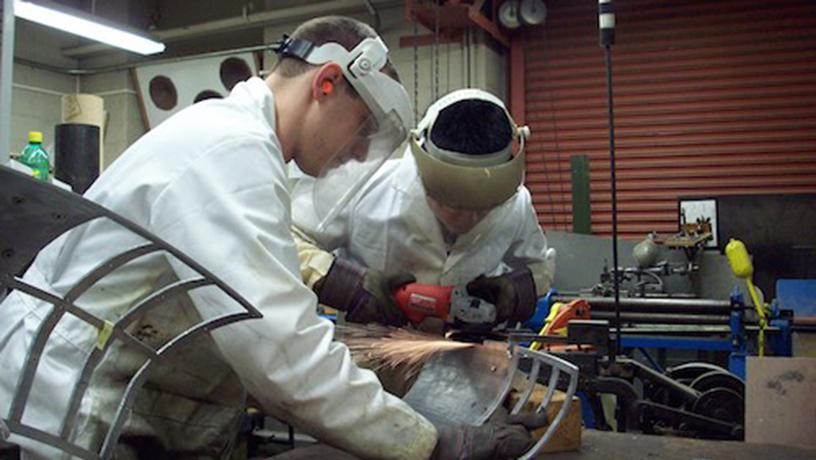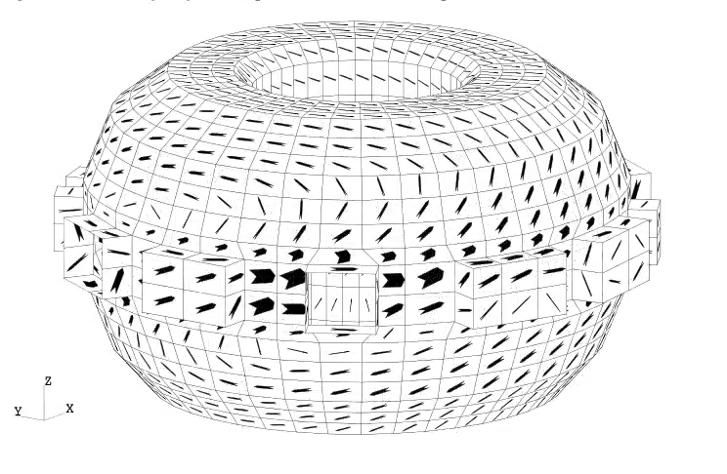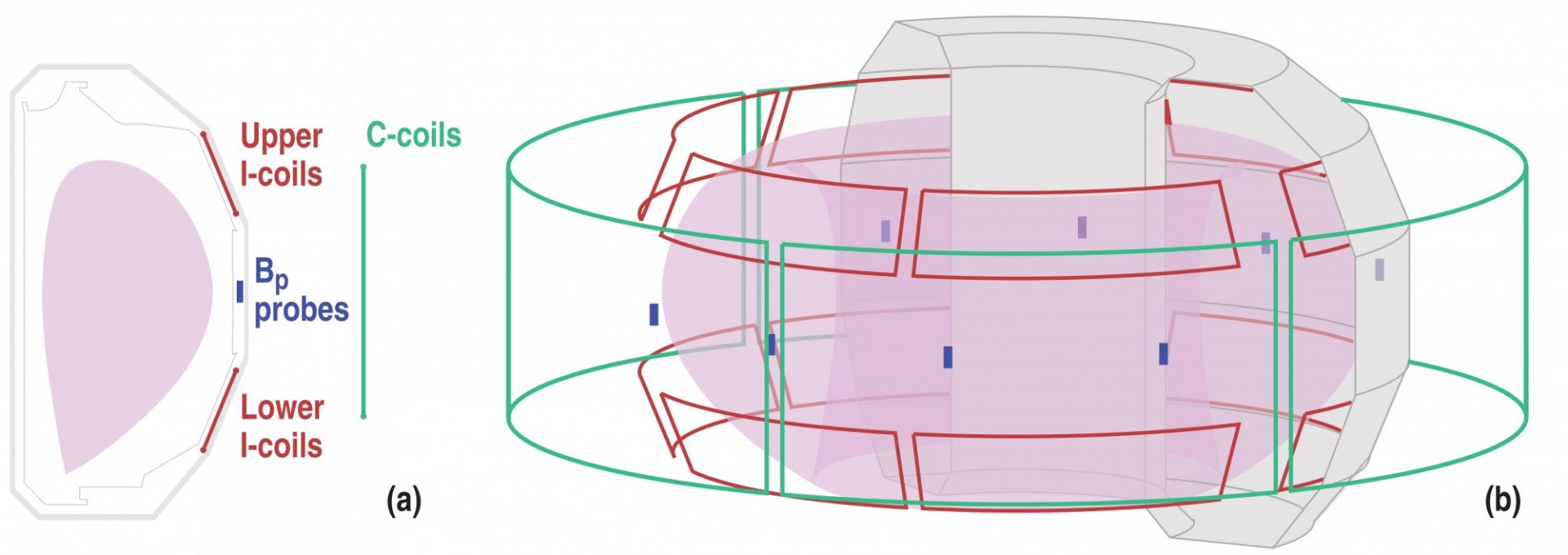Columbia Plasma Lab researchers have long pioneered the study of active control of tokamak instabilities.
Image Carousel with 2 slides
A carousel is a rotating set of images. Use the previous and next buttons to change the displayed slide
-
Slide 1: Columbia researchers machining instability control actuators for HBT-EP
-
Slide 2: Model of the DIII-D tokamak vacuum vessel showing induced currents

Columbia researchers machining instability control actuators for HBT-EP

Model of the DIII-D tokamak vacuum vessel showing induced currents
Instability Control Research
The work of the Columbia Group at the DIII-D tokamak facility focuses on understanding and controlling various MHD instabilities. These instabilities depend on details of the plasma current and pressure profiles and by manipulating these profiles tokamak discharges can be designed to be passively stable to numerous instabilities. The Columbia group works to determine the stability limits of a wide range of potential DIII-D operating scenarios using cutting-edge MHD stability techniques as well as working to determine when more sophisticated physics such as nonlinear or resistive effects become important to the plasma stability. In order to maximize the performance of future fusion devices it may be necessary to operate above these passive stability boundaries and it is therefore necessary to use active feedback to identify and control unstable MHD instabilities.
The Columbia Group pioneered and continue to develop GPU-based active control of the MHD Resistive Wall Mode (RWM) on the DIII-D tokamak. This feedback uses an optimal controller and observer based on the VALEN physics model which takes into account the 3D nature of conducting structures near the plasma that can effect the dynamics of the RWM. This advanced feedback technique allows for control coils outside the vacuum vessel to be used for feedback just as effectively as those inside the vessel which will be essential if active control is needed in future fusion reactors. These techniques also offer a real-time compensation and correction for "error fields" produced by magnetic coil misalignments on the DIII-D tokamak. These stray fields can be amplified by the plasma as it approaches marginal stability and this amplified field can negatively effect plasma operating if not properly corrected for.
The Columbia Group also assumes a leadership role in the DIII-D community with many of its members involved in leading experimental campaigns and research groups as well as being outspoken during both short and long-term community planning efforts.


The primary research objective of Columbia University’s High Beta Tokamak Research program is to explore, test and optimize techniques to actively control long-wavelength instabilities near the ideal wall stabilization limit. HBT-EP combines unique tools including a modular, high-resolution instrumented control shell, a high-speed Graphics Processing Unit (GPU)-based digital feedback control system, and the results from the carefully-benchmarked 3D VALEN modeling code to evaluate methods of active mode control that can be scaled and applied to the world’s major fusion research experiments. Because of its intermediate size, the HBT-EP facility enables rapid and low-cost implementation of new control tools and capabilities.
Three major research milestones have recently been achieved. First, we have implemented active control of the current-driven torque from an edge-inserted electrode and demonstrated real-time control of plasma rotation during mode control studies. These experiments have also led to consistent and reliable formation of bias-driven ohmic H-mode discharges. Scientists and students using HBT-EP are now able to explore the science of flow shear and fast edge rotation effects on MHD instabilities, RMP response, instability control and plasma disruptivity. Second, we have successfully installed an array of new scrape-off-layer current diagnostics that are providing important and first-of-a-kind observations of edge current fluctuations induced by plasma MHD dynamics. These currents are significant and show that scrape-off layer(SOL) currents can approach levels comparable to eddy currents that flow in close-fitting conducting walls. Third, we have begun to implement a first-of-a-kind mode control system using extreme ultraviolet (EUV) and soft x-ray (SXR) inputs linked to magnetic and edge current actuators.
These new measurements and capabilities have attracted the attention of the broader tokamak research community, including scientists engaged in transient event modeling for ITER and those preparing for ITER operation. With this in mind, the major research goals of the HBT-EP program include: (i) understand the physics of SOL currents and interactions between the helical plasma edge and conducting boundary structures, (ii) test new methods for measurement and mode control that integrate optical and magnetic detector arrays with both magnetic and SOL current feedback, and (iii) understand fundamental MHD issues associated with disruptions, magnetic perturbations, and SOL currents.